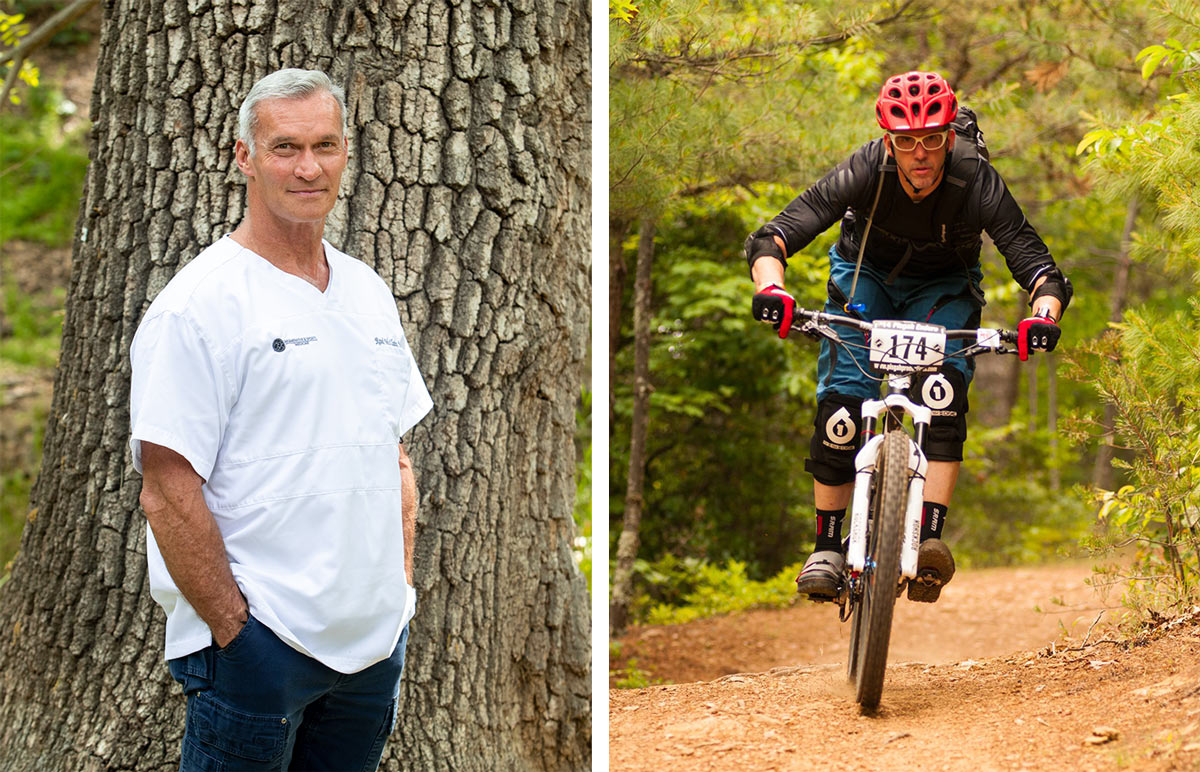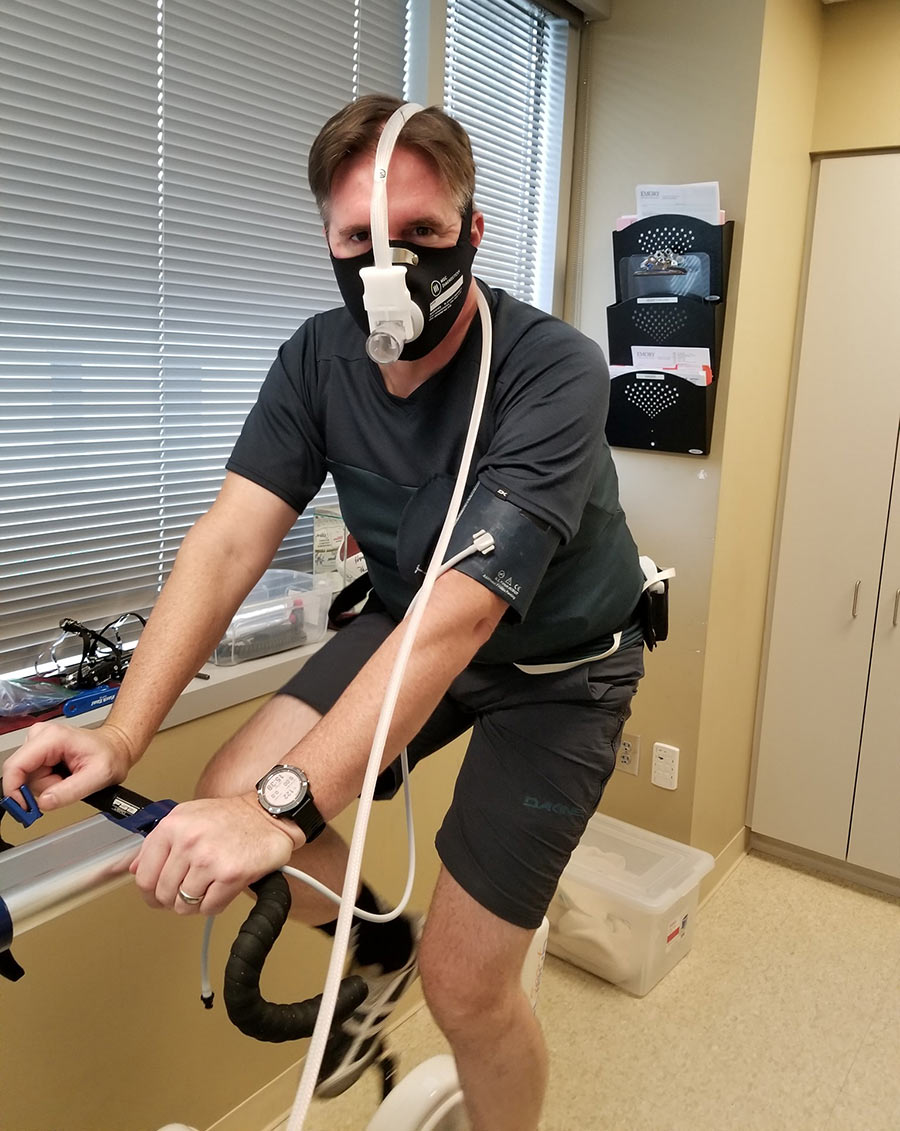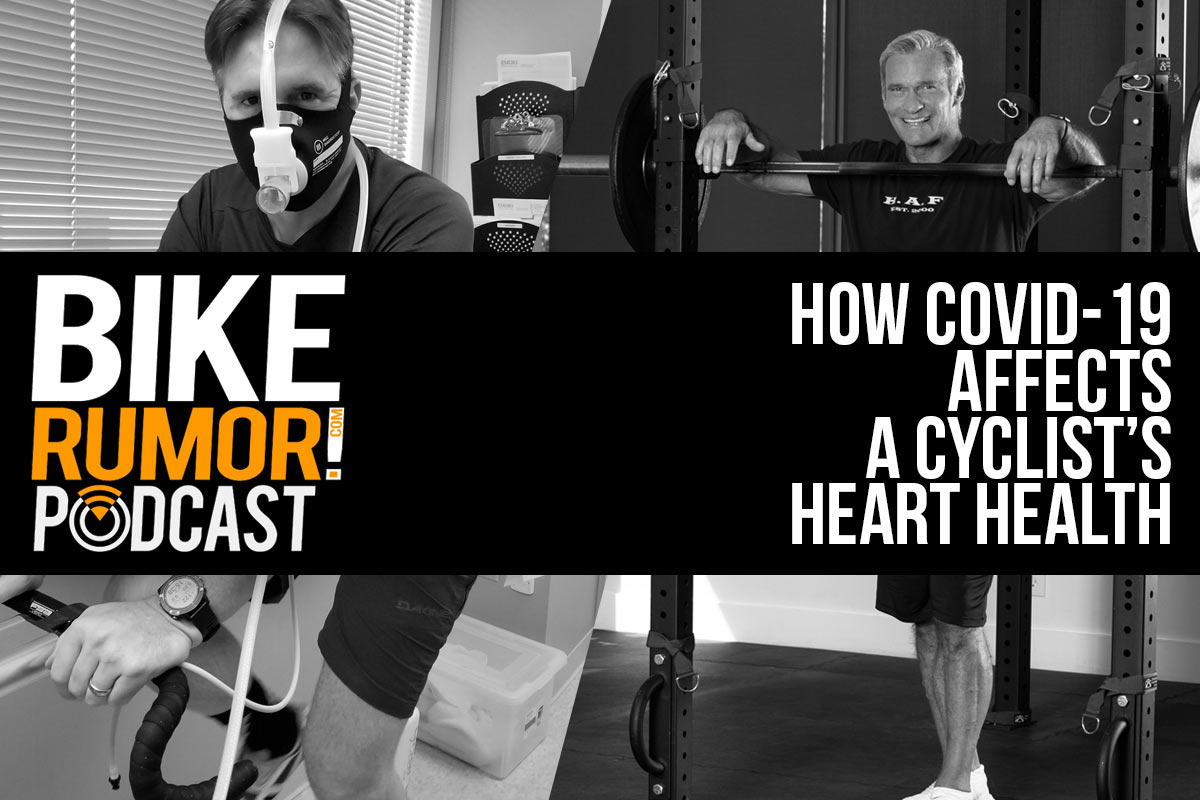Wondering how the Coronavirus will affect your heart?
Whether you should ride while you’re infected with COVID-19?
What the long term health effects are as a cyclist?
How long it takes to recover from the virus?
When you can ride again after testing negative?
We answer all those questions and more in this episode, with special guests Dr. Rand McClain and Trey Richardson. Dr. McClain is chief medical officer and heart health expert at LCR Health. Trey is a Bikerumor contributor and cycling industry veteran who has extensive experience and training in physical therapy and high level competition.
Together, they share their real world experience (Trey was infected and had thorough testing done) and medical knowledge about how COVID-19 affects a cyclist’s heart, lungs, and body…and why you need to be especially careful when resuming exercise to ensure you don’t do long term damage to your organs!
For the full show notes, including a list of tests and followup checks that Dr. McClain recommends every athlete gets following a Coronavirus infection, check out the full post at https://bikerumor.com/podcast and click on this episode.
LINKS & RESOURCES
At-Home Testing for COVID
The basic health checks to test whether you have (or are likely to have) COVID-19 that you can do at home include:
- Heart Rate (is it higher than normal?)
- Temperature (is that higher than normal, too?)
- Blood Oxygenation (is that lower than normal?)
- Heart Rate Variability (is your heart rate super steady?)
Any of those signals could indicate a viral infection. You might also notice that you just can’t recover from any effort, even an easy one. Or you may be out of breath from a very light effort, even just walking up stairs.
If you’re experiencing any of these symptoms, go get tested. And stay away from others to avoid potentially infecting them, too.

Post-COVID Heart Health Testing
Equally important to resting and isolating during an infection is how you ease back into training after your infection clears. As Trey’s example shows, if you rush straight back into riding and training, you run a very real risk of doing permanent damage to your heart’s muscular and electrical functions.
Dr. McClain recommends getting some or all of the following tests done to tell if your heart is ready for you to resume riding:
CMR (“Cardiac Magnetic Resonance” Imaging)
Gold standard. 90% of acute cases show an abnormal finding (LGE = “Late gadolinium enhancement” which shows scarring and fibrosis most usually found in the lateral walls of the heart) and LGE is a strong indicator for higher risk of sudden cardiac death and the opposite is true. When combined with the shape of the heart and its function, LGE is 84% sensitive in picking up myocarditis.
Troponin I
CK-MB (both of these enzymes that can be detected within blood can be mildly elevated in athletes from a hard workout, and only 25% of the time is troponin I elevated with myocarditis but in combination with other signs, symptoms, assays, and imaging, can be helpful)
Resting ECG
Used to identify electrical issues in the heart and tachycardia (over 100 beats per minute) and irregular heartbeats like atrial fibrillation.
Holter monitoring
Checking for rhythm disturbances for up to 3 months (like a constant ECG monitoring).
Echocardiogram
Mandatory – uses Doppler and ultrasound technology looking for reduced output (“Ejection Fraction”) and structure and flow abnormalities.

KEY TAKEAWAYS
The most surprising (and alarming) revelation for me was that exposure to the Coronavirus/COVID-19 could continue to damage your heart, lungs and other parts of your body even after vaccination.
The vaccine will boost your immunity to levels that prevent severe outward symptoms, but don’t kill the virus on contact. Meaning, even after vaccination, you may still carry and spread the virus. And it can still enter your body and do damage to your heart and lungs before your body is able to eradicate it.
So, my personal takeaway is that we’re going to want to wear masks and social distance for some time after most people are vaccinated. It’s a precaution, however inconvenient, that we cyclists should take seriously if we want to continue enjoying a long, healthy life on the bike!
Huge thanks to Dr. McClain and Trey for sharing their stories and expertise!
